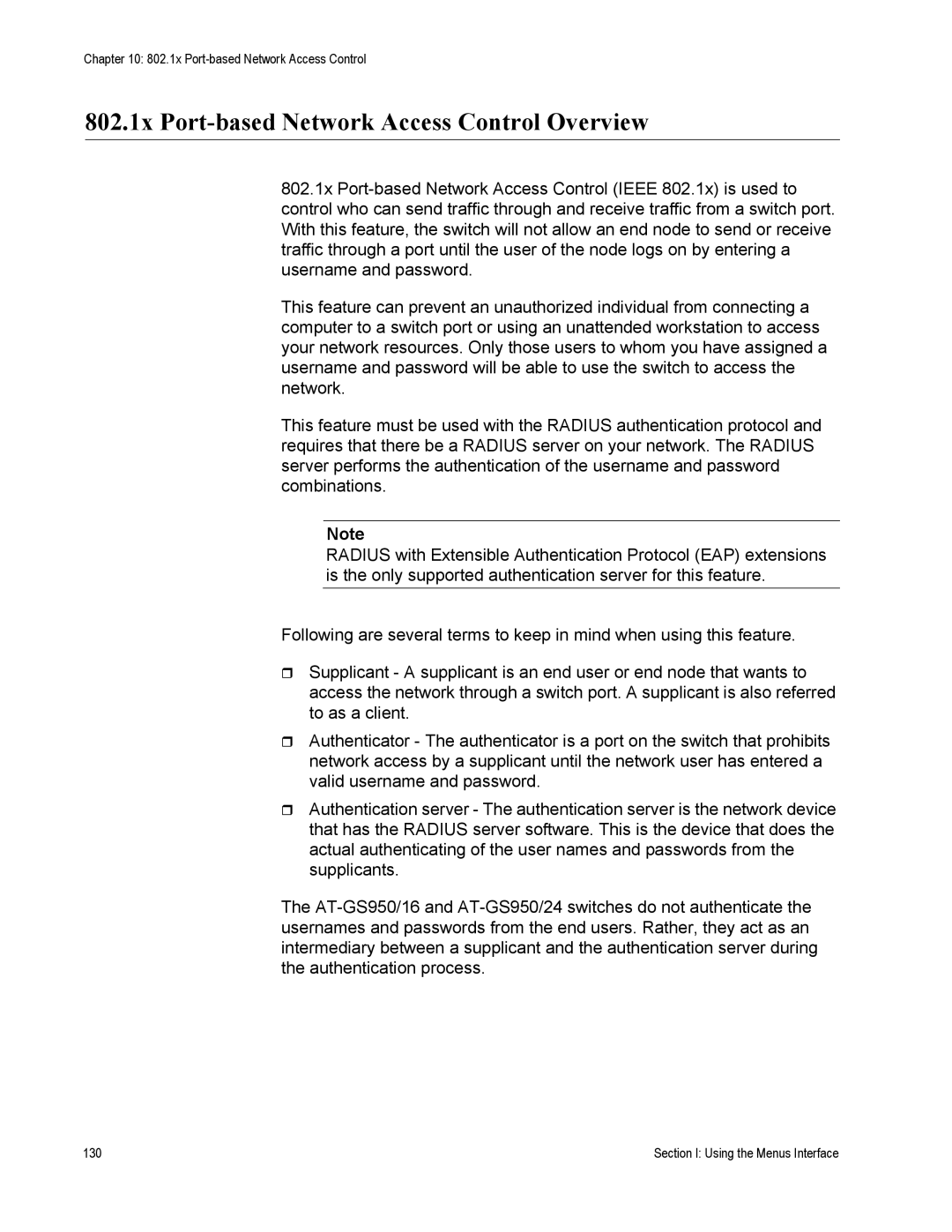
Chapter 10: 802.1x
802.1x Port-based Network Access Control Overview
802.1x
This feature can prevent an unauthorized individual from connecting a computer to a switch port or using an unattended workstation to access your network resources. Only those users to whom you have assigned a username and password will be able to use the switch to access the network.
This feature must be used with the RADIUS authentication protocol and requires that there be a RADIUS server on your network. The RADIUS server performs the authentication of the username and password combinations.
Note
RADIUS with Extensible Authentication Protocol (EAP) extensions is the only supported authentication server for this feature.
Following are several terms to keep in mind when using this feature.
Supplicant - A supplicant is an end user or end node that wants to access the network through a switch port. A supplicant is also referred to as a client.
Authenticator - The authenticator is a port on the switch that prohibits network access by a supplicant until the network user has entered a valid username and password.
Authentication server - The authentication server is the network device that has the RADIUS server software. This is the device that does the actual authenticating of the user names and passwords from the supplicants.
The
130 | Section I: Using the Menus Interface |
